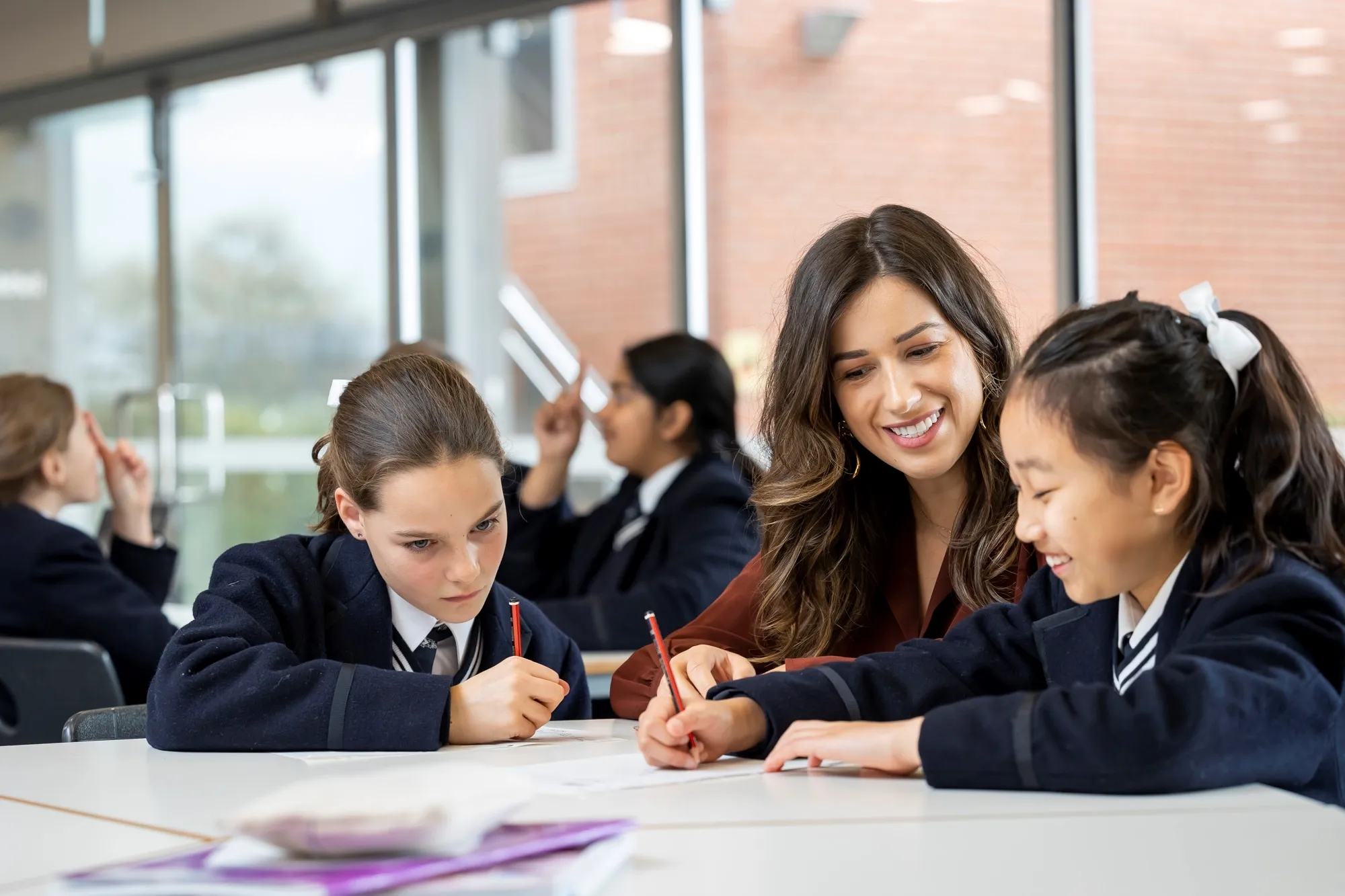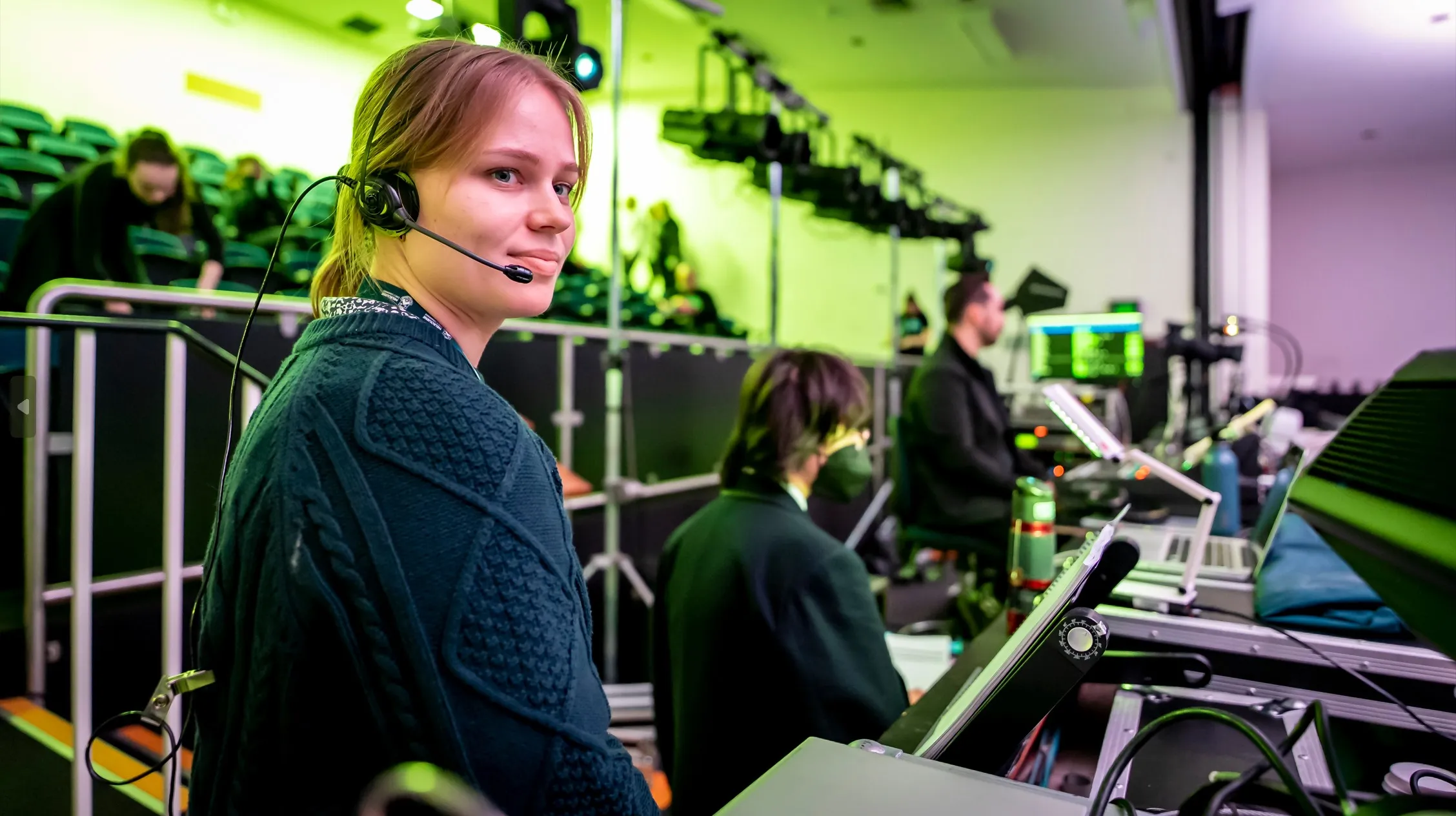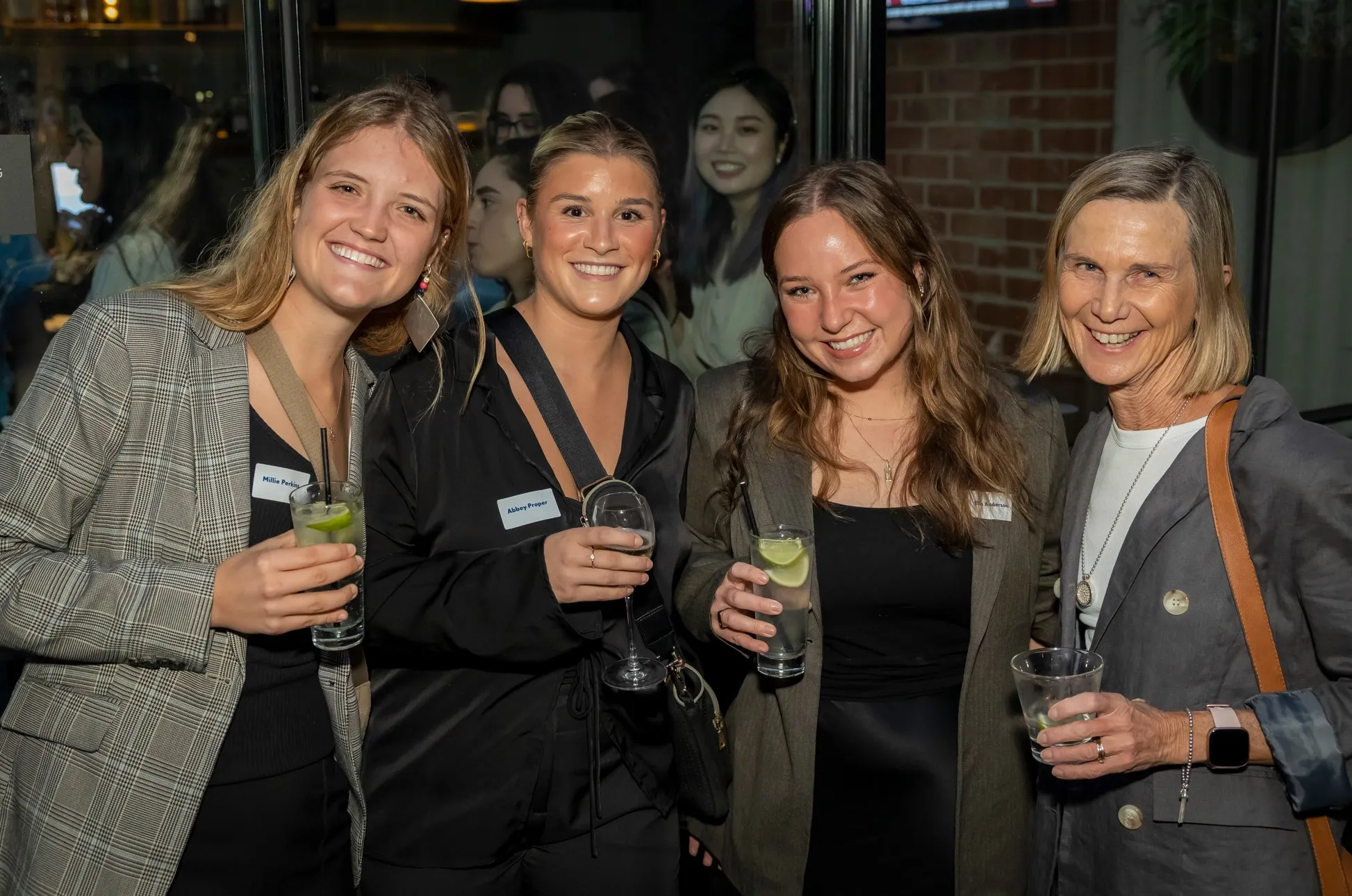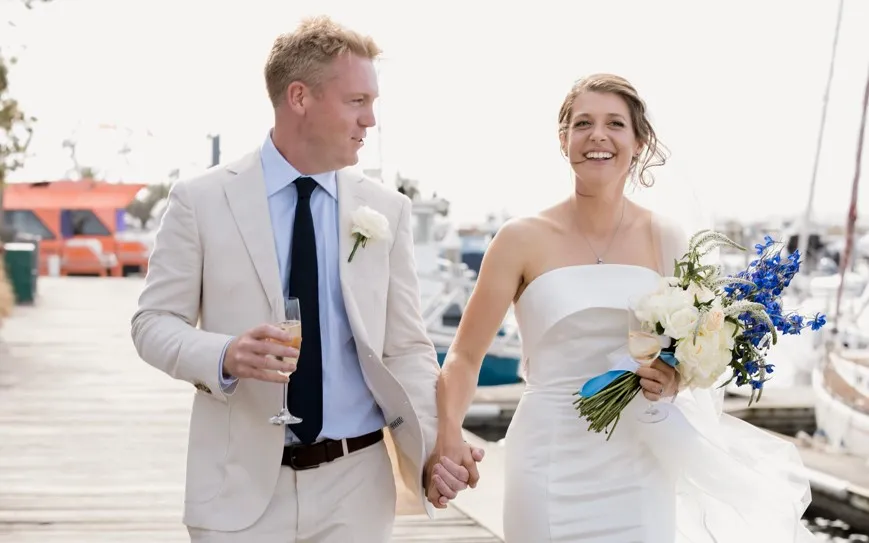

J’NOEMI ANDERSON, YEAR 12 2022, AFLW ST KILDA RECRUIT.


J’NOEMI ANDERSON, YEAR 12 2022, AFLW ST KILDA RECRUIT.
"I Do Love A Locker Room; It Smells Like Potential"
In the now famous words of Ted Lasso, the notion of identifying potential in our young sports people has become increasingly important.

Athlete monitoring, wellness data, and “the numbers tell us she is good to go” are phrases that have become familiar within our sport lexicon.
The holy grail in sport and exercise science and medicine, is the ability to predict the performance status and readiness of an individual athlete. In elite sport, coaches, sport scientists and medical practitioners employ a variety of physical, biochemical, and psychological tests, training and match monitoring, and injury-screening tools in the quest to predict performance outcomes, identify talent, or mitigate injury.
The rise of sports data and analytics has transformed the way player tracking, movement mechanics, skill acquisition, decision making, game plans, and training prescription can be used to enhance performance and how we enjoy sport and exercise.
While the contribution of science to Australian high-performance sport has been prominent since the opening of the Australian Institute of Sport in 1981, the role of technology and analytics in supporting high performance athletes has never been more significant than it is today. New technologies and data insights are having a profound impact on the contribution sports scientists make to athlete and human performance.
Economically, the Australian sportstech sector is now worth A$4.25 billion, which is equal in value to Australia’s fintech sector (Annual Sports Innovation Report, May 2023.) The report highlights industry insights and major trends in Australia's thriving sports technology and innovation landscape, and the Brisbane 2032 Olympic and Paralympic Games give us as a nation, clear focus.
“The runway to 2032 is a gift for this generation. It’s an opportunity to unite, inspire and build the nation through sport. It is a defining era and we – as a nation – must step up.” (Kieran Perkins, OAM, National Press Club Address, October 2022.)
So what?
Athlete monitoring, wellness data, and “the numbers tell us she is good to go” are phrases that have become familiar within our sport lexicon.
The holy grail in sport and exercise science and medicine, is the ability to predict the performance status and readiness of an individual athlete. In elite sport, coaches, sport scientists and medical practitioners employ a variety of physical, biochemical, and psychological tests, training and match monitoring, and injury-screening tools in the quest to predict performance outcomes, identify talent, or mitigate injury.
The rise of sports data and analytics has transformed the way player tracking, movement mechanics, skill acquisition, decision making, game plans, and training prescription can be used to enhance performance and how we enjoy sport and exercise.
While the contribution of science to Australian high-performance sport has been prominent since the opening of the Australian Institute of Sport in 1981, the role of technology and analytics in supporting high performance athletes has never been more significant than it is today. New technologies and data insights are having a profound impact on the contribution sports scientists make to athlete and human performance.
Economically, the Australian sportstech sector is now worth A$4.25 billion, which is equal in value to Australia’s fintech sector (Annual Sports Innovation Report, May 2023.) The report highlights industry insights and major trends in Australia's thriving sports technology and innovation landscape, and the Brisbane 2032 Olympic and Paralympic Games give us as a nation, clear focus.
“The runway to 2032 is a gift for this generation. It’s an opportunity to unite, inspire and build the nation through sport. It is a defining era and we – as a nation – must step up.” (Kieran Perkins, OAM, National Press Club Address, October 2022.)
So what?
Athlete monitoring, wellness data, and “the numbers tell us she is good to go” are phrases that have become familiar within our sport lexicon.
The holy grail in sport and exercise science and medicine, is the ability to predict the performance status and readiness of an individual athlete. In elite sport, coaches, sport scientists and medical practitioners employ a variety of physical, biochemical, and psychological tests, training and match monitoring, and injury-screening tools in the quest to predict performance outcomes, identify talent, or mitigate injury.
The rise of sports data and analytics has transformed the way player tracking, movement mechanics, skill acquisition, decision making, game plans, and training prescription can be used to enhance performance and how we enjoy sport and exercise.
While the contribution of science to Australian high-performance sport has been prominent since the opening of the Australian Institute of Sport in 1981, the role of technology and analytics in supporting high performance athletes has never been more significant than it is today. New technologies and data insights are having a profound impact on the contribution sports scientists make to athlete and human performance.
Economically, the Australian sportstech sector is now worth A$4.25 billion, which is equal in value to Australia’s fintech sector (Annual Sports Innovation Report, May 2023.) The report highlights industry insights and major trends in Australia's thriving sports technology and innovation landscape, and the Brisbane 2032 Olympic and Paralympic Games give us as a nation, clear focus.
“The runway to 2032 is a gift for this generation. It’s an opportunity to unite, inspire and build the nation through sport. It is a defining era and we – as a nation – must step up.” (Kieran Perkins, OAM, National Press Club Address, October 2022.)
So what?


Jasmine, Year 8, GSV Cross Country Division 1 Championships, Cruden Farm. Jasmine finished 5th in the Juniors.



Jasmine, Year 8, GSV Cross Country Division 1 Championships, Cruden Farm. Jasmine finished 5th in the Juniors.
Of relevance to us, is what and how such rapid innovation in sport, coaching, and sport science and medicine is filtering through to grassroots and community sport, exercise medicine, recreational health and fitness, the education sector and our school environment.
Our purpose-built Artemis Centre, opened in 2017, embodies Melbourne Girls Grammar’s innovative approach to developing strong, confident, and capable Grammarians, ready to meet the current moment and embrace the future with the skills, capacities, behaviours and understanding to be active and fit for life.
On a much deeper level, Artemis signifies so much more and its timely to be reminded of the words spoken at the opening of the Artemis Centre on 1 September 2017 by former Chair of School Council, Professor Katie Allen, when she said:
"This building – built by women for women – reflects the broader societal seismic shifts that are taking place in our world. Changes that mean women are taking their place as equal partners not just in sharing the world but in shaping the world that we live in. This building is a statement in the journey towards that tremendous goal...
- Professor Katie Allen, former Chair of School Council
"With privilege comes responsibility… and it is important to reflect that we have a responsibility to help those less fortunate than ourselves. Collectively our students understand that they have a responsibility to share the gift of an excellent education; to ensure that they contribute to the world they live in in a thoughtful and caring way; that they join our greater community, when they leave the ‘red bricks’, as ethical women of action.
"These values are embodied in the thousands of Old Grammarians who continue to contribute in a myriad of ways to make the world a better place.”
"More than just the built environment, Artemis is a true community hub situated at the centre of our physical wellbeing and performance ecosystem, and over the past seven years has afforded us the privilege and opportunity to build on the spirit of innovation it represents."
- Sally Bailey, Executive Director of Artemis Programs
So, what shape has innovation taken in our programs over this time?
Of relevance to us, is what and how such rapid innovation in sport, coaching, and sport science and medicine is filtering through to grassroots and community sport, exercise medicine, recreational health and fitness, the education sector and our school environment.
Our purpose-built Artemis Centre, opened in 2017, embodies Melbourne Girls Grammar’s innovative approach to developing strong, confident, and capable Grammarians, ready to meet the current moment and embrace the future with the skills, capacities, behaviours and understanding to be active and fit for life.
On a much deeper level, Artemis signifies so much more and its timely to be reminded of the words spoken at the opening of the Artemis Centre on 1 September 2017 by former Chair of School Council, Professor Katie Allen, when she said:
"This building – built by women for women – reflects the broader societal seismic shifts that are taking place in our world. Changes that mean women are taking their place as equal partners not just in sharing the world but in shaping the world that we live in. This building is a statement in the journey towards that tremendous goal...
- Professor Katie Allen, former Chair of School Council
"With privilege comes responsibility… and it is important to reflect that we have a responsibility to help those less fortunate than ourselves. Collectively our students understand that they have a responsibility to share the gift of an excellent education; to ensure that they contribute to the world they live in in a thoughtful and caring way; that they join our greater community, when they leave the ‘red bricks’, as ethical women of action.
"These values are embodied in the thousands of Old Grammarians who continue to contribute in a myriad of ways to make the world a better place.”
"More than just the built environment, Artemis is a true community hub situated at the centre of our physical wellbeing and performance ecosystem, and over the past seven years has afforded us the privilege and opportunity to build on the spirit of innovation it represents."
- Sally Bailey, Executive Director of Artemis Programs
So, what shape has innovation taken in our programs over this time?
Of relevance to us, is what and how such rapid innovation in sport, coaching, and sport science and medicine is filtering through to grassroots and community sport, exercise medicine, recreational health and fitness, the education sector and our school environment.
Our purpose-built Artemis Centre, opened in 2017, embodies Melbourne Girls Grammar’s innovative approach to developing strong, confident, and capable Grammarians, ready to meet the current moment and embrace the future with the skills, capacities, behaviours and understanding to be active and fit for life.
On a much deeper level, Artemis signifies so much more and its timely to be reminded of the words spoken at the opening of the Artemis Centre on 1 September 2017 by former Chair of School Council, Professor Katie Allen, when she said:
"This building – built by women for women – reflects the broader societal seismic shifts that are taking place in our world. Changes that mean women are taking their place as equal partners not just in sharing the world but in shaping the world that we live in. This building is a statement in the journey towards that tremendous goal...
- Professor Katie Allen, former Chair of School Council
"With privilege comes responsibility… and it is important to reflect that we have a responsibility to help those less fortunate than ourselves. Collectively our students understand that they have a responsibility to share the gift of an excellent education; to ensure that they contribute to the world they live in in a thoughtful and caring way; that they join our greater community, when they leave the ‘red bricks’, as ethical women of action.
"These values are embodied in the thousands of Old Grammarians who continue to contribute in a myriad of ways to make the world a better place.”
"More than just the built environment, Artemis is a true community hub situated at the centre of our physical wellbeing and performance ecosystem, and over the past seven years has afforded us the privilege and opportunity to build on the spirit of innovation it represents."
- Sally Bailey, Executive Director of Artemis Programs
So, what shape has innovation taken in our programs over this time?


Isabel and Charlize, Year 10, rowing.



Isabel and Charlize, Year 10, rowing.
Innovation in Community Service…
Artemis Aquatics was born from our vision to teach the whole family and broader community essential life skills. Aquatic safety and learning to swim are vital skills for all Australians, and so when the 2022 National Coastal Safety Report revealed that drowning deaths in Australia peaked at its highest levels in 25 years, a call to action was required.
In December 2022 and June 2023, we welcomed Sacred Heart Primary School in Fitzroy for an accelerated water safety and learn to swim program. Our primary purpose has been to provide the children from the Sacred Heart community with access to our facilities, coaches, and program, so that they too can benefit from learning to respect and love the water for their own safety and wellbeing. In addition to the experience of our established coaching team, Year 9 students have played a fundamental role in the organisation and delivery of the program, forging meaningful connections with so many children who are new to this country and challenged by language barriers and socio-economic disadvantage.
It’s not nearly enough, but it’s a start, and we hope the beginning of a lifelong partnership with this beautiful community.
Innovation in Community Service…
Artemis Aquatics was born from our vision to teach the whole family and broader community essential life skills. Aquatic safety and learning to swim are vital skills for all Australians, and so when the 2022 National Coastal Safety Report revealed that drowning deaths in Australia peaked at its highest levels in 25 years, a call to action was required.
In December 2022 and June 2023, we welcomed Sacred Heart Primary School in Fitzroy for an accelerated water safety and learn to swim program. Our primary purpose has been to provide the children from the Sacred Heart community with access to our facilities, coaches, and program, so that they too can benefit from learning to respect and love the water for their own safety and wellbeing. In addition to the experience of our established coaching team, Year 9 students have played a fundamental role in the organisation and delivery of the program, forging meaningful connections with so many children who are new to this country and challenged by language barriers and socio-economic disadvantage.
It’s not nearly enough, but it’s a start, and we hope the beginning of a lifelong partnership with this beautiful community.
Innovation in Community Service…
Artemis Aquatics was born from our vision to teach the whole family and broader community essential life skills. Aquatic safety and learning to swim are vital skills for all Australians, and so when the 2022 National Coastal Safety Report revealed that drowning deaths in Australia peaked at its highest levels in 25 years, a call to action was required.
In December 2022 and June 2023, we welcomed Sacred Heart Primary School in Fitzroy for an accelerated water safety and learn to swim program. Our primary purpose has been to provide the children from the Sacred Heart community with access to our facilities, coaches, and program, so that they too can benefit from learning to respect and love the water for their own safety and wellbeing. In addition to the experience of our established coaching team, Year 9 students have played a fundamental role in the organisation and delivery of the program, forging meaningful connections with so many children who are new to this country and challenged by language barriers and socio-economic disadvantage.
It’s not nearly enough, but it’s a start, and we hope the beginning of a lifelong partnership with this beautiful community.


Year 9 Student Ruby Teaching Swimming Skills to a Sacred Heart Primary Student.



Year 9 Student Ruby Teaching Swimming Skills to a Sacred Heart Primary Student.


Year 9 Student Ruby Teaching Swimming Skills to a Sacred Heart Primary Student.
Innovation in Female Health, Fitness, and Wellbeing...
"Our physical fitness is our greatest asset. It is our primary protector and enhancer for our physical and mental wellbeing, optimal performance and lifestyle, and our daily function."
- Sally Bailey, Executive Director of Artemis Programs
The physical, mental, cognitive, social, and emotional benefits from being active at all stages in a person’s life are clear. Despite this, as a nation we are moving less than ever.
Knowing is not enough.
A demand for a progressive, innovative, and relevant solution was necessary. Our bespoke Fit for You program, launched in 2017, is informed by national and global research on engaging girls and young women in sport and exercise, positive youth sport and athletic development, sport and exercise science literature, and the future of sport in Australia.
Our team of Strength and Conditioning Coaches and Exercise Physiologists support our Grammarians in the creation of personalised fitness plans. Cloud-based exercise prescription platform (Visual Coaching Pro) is used for students to access and interact with their training program, and importantly to teach them how to track, monitor and analyse their progress over time. Supplementary applications as such “Coaches Eye”, “Hudl Technique” and “Instantreplay” have also been valuable coaching tools to provide feedback on movement capabilities of students.
In 2023, a series of Fit for You pathways were designed and rolled out through House Wellbeing Time. Students in Years 9 and 10 select practical learning modules covering a range of topics in strength and conditioning, nutrition, sports performance analysis, conditioning program design, Pilates, and netball coaching.
Whether our Grammarians engage in training for performance, or exercise for healthy lifestyle benefits, the Fit for You program takes a holistic and integrated approach to physical wellbeing.
Innovation in Female Health, Fitness, and Wellbeing...
"Our physical fitness is our greatest asset. It is our primary protector and enhancer for our physical and mental wellbeing, optimal performance and lifestyle, and our daily function."
- Sally Bailey, Executive Director of Artemis Programs
The physical, mental, cognitive, social, and emotional benefits from being active at all stages in a person’s life are clear. Despite this, as a nation we are moving less than ever.
Knowing is not enough.
A demand for a progressive, innovative, and relevant solution was necessary. Our bespoke Fit for You program, launched in 2017, is informed by national and global research on engaging girls and young women in sport and exercise, positive youth sport and athletic development, sport and exercise science literature, and the future of sport in Australia.
Our team of Strength and Conditioning Coaches and Exercise Physiologists support our Grammarians in the creation of personalised fitness plans. Cloud-based exercise prescription platform (Visual Coaching Pro) is used for students to access and interact with their training program, and importantly to teach them how to track, monitor and analyse their progress over time. Supplementary applications as such “Coaches Eye”, “Hudl Technique” and “Instantreplay” have also been valuable coaching tools to provide feedback on movement capabilities of students.
In 2023, a series of Fit for You pathways were designed and rolled out through House Wellbeing Time. Students in Years 9 and 10 select practical learning modules covering a range of topics in strength and conditioning, nutrition, sports performance analysis, conditioning program design, Pilates, and netball coaching.
Whether our Grammarians engage in training for performance, or exercise for healthy lifestyle benefits, the Fit for You program takes a holistic and integrated approach to physical wellbeing.
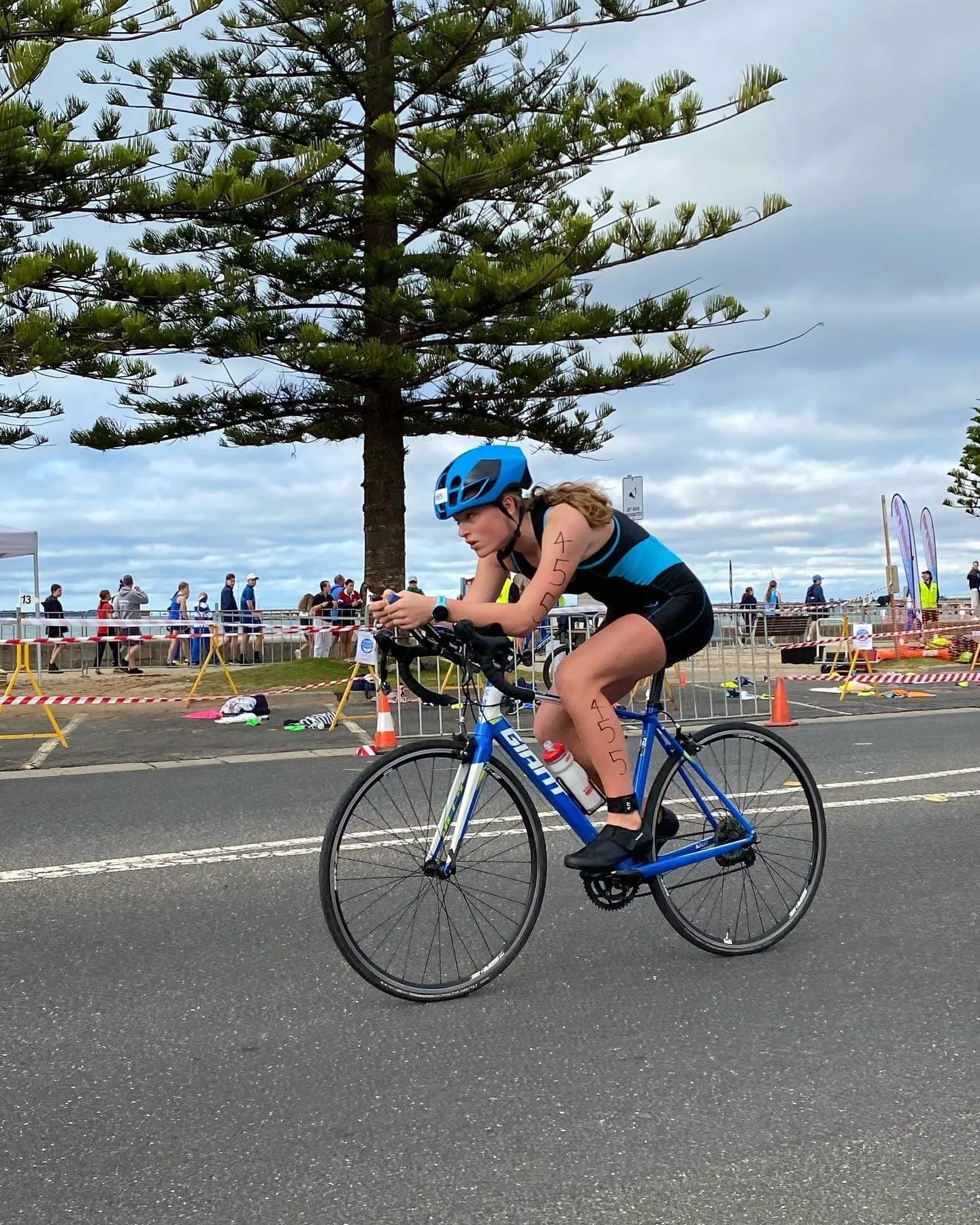

Grace, Year 9 – GSV Triathlon. Grace finished 7th in the Intermediate Age group.



Grace, Year 9 – GSV Triathlon. Grace finished 7th in the Intermediate Age group.


Grace, Year 9 – GSV Triathlon. Grace finished 7th in the Intermediate Age group.
Innovation in Coaching…
In 2018-2019, we commissioned an independent consultant to commission a whole school review into our sport and physical activity programs at MGGS.
The number one theme to emerge from the Sport Review with respect to what is most important to our community involved “Fun, skill development and personal growth outcomes.”
The most critical step was to re-shape the Head of Sport role, which had historically contained a significant administrative load. We recognised that it needed to be more than that, and so we positioned the role as Head of Sport and Coaching, with a key priority on people and coach development.
Both a strength and a challenge in a school environment is the size and diversity of the coaching team who are all at different stages of their coaching journey; the team extends from very experienced, specialist career coaches to Old Grammarians enjoying a casual coaching position.
We know that good coaches create enjoyable experiences which lead to young people staying in sport longer. So every coach who works with our students matters; the role they play is critical to the quality of learning and teaching for our students. Just as important arethe experiences they shape, the environment they foster, and the connections they make.
A key piece of work that Head of Sport and Coaching, Anthony Bruhn, has been building and implementing since his appointment in January 2020 is a Coach Learning and Development Framework. This Framework is driven to ensure continuous and shared learning, growth, and development of our Artemis staff – Heads of Programs, Physical Performance Team, and Head Coaches – and that this learning is consistent and filtered through every program at every level for every coach.
In 2022, we welcomed Professor Jean Côté, a world leading authority in transformational coaching and leadership, and positive youth sport development. A prolific researcher across talent development and expertise, youth sport, play, pedagogy, coaching effectiveness, and transformational coaching, Côté spent a week with the Artemis team translating research into practice.
Innovation in Coaching…
In 2018-2019, we commissioned an independent consultant to commission a whole school review into our sport and physical activity programs at MGGS.
The number one theme to emerge from the Sport Review with respect to what is most important to our community involved “Fun, skill development and personal growth outcomes.”
The most critical step was to re-shape the Head of Sport role, which had historically contained a significant administrative load. We recognised that it needed to be more than that, and so we positioned the role as Head of Sport and Coaching, with a key priority on people and coach development.
Both a strength and a challenge in a school environment is the size and diversity of the coaching team who are all at different stages of their coaching journey; the team extends from very experienced, specialist career coaches to Old Grammarians enjoying a casual coaching position.
We know that good coaches create enjoyable experiences which lead to young people staying in sport longer. So every coach who works with our students matters; the role they play is critical to the quality of learning and teaching for our students. Just as important arethe experiences they shape, the environment they foster, and the connections they make.
A key piece of work that Head of Sport and Coaching, Anthony Bruhn, has been building and implementing since his appointment in January 2020 is a Coach Learning and Development Framework. This Framework is driven to ensure continuous and shared learning, growth, and development of our Artemis staff – Heads of Programs, Physical Performance Team, and Head Coaches – and that this learning is consistent and filtered through every program at every level for every coach.
In 2022, we welcomed Professor Jean Côté, a world leading authority in transformational coaching and leadership, and positive youth sport development. A prolific researcher across talent development and expertise, youth sport, play, pedagogy, coaching effectiveness, and transformational coaching, Côté spent a week with the Artemis team translating research into practice.
Innovation in Coaching…
In 2018-2019, we commissioned an independent consultant to commission a whole school review into our sport and physical activity programs at MGGS.
The number one theme to emerge from the Sport Review with respect to what is most important to our community involved “Fun, skill development and personal growth outcomes.”
The most critical step was to re-shape the Head of Sport role, which had historically contained a significant administrative load. We recognised that it needed to be more than that, and so we positioned the role as Head of Sport and Coaching, with a key priority on people and coach development.
Both a strength and a challenge in a school environment is the size and diversity of the coaching team who are all at different stages of their coaching journey; the team extends from very experienced, specialist career coaches to Old Grammarians enjoying a casual coaching position.
We know that good coaches create enjoyable experiences which lead to young people staying in sport longer. So every coach who works with our students matters; the role they play is critical to the quality of learning and teaching for our students. Just as important arethe experiences they shape, the environment they foster, and the connections they make.
A key piece of work that Head of Sport and Coaching, Anthony Bruhn, has been building and implementing since his appointment in January 2020 is a Coach Learning and Development Framework. This Framework is driven to ensure continuous and shared learning, growth, and development of our Artemis staff – Heads of Programs, Physical Performance Team, and Head Coaches – and that this learning is consistent and filtered through every program at every level for every coach.
In 2022, we welcomed Professor Jean Côté, a world leading authority in transformational coaching and leadership, and positive youth sport development. A prolific researcher across talent development and expertise, youth sport, play, pedagogy, coaching effectiveness, and transformational coaching, Côté spent a week with the Artemis team translating research into practice.
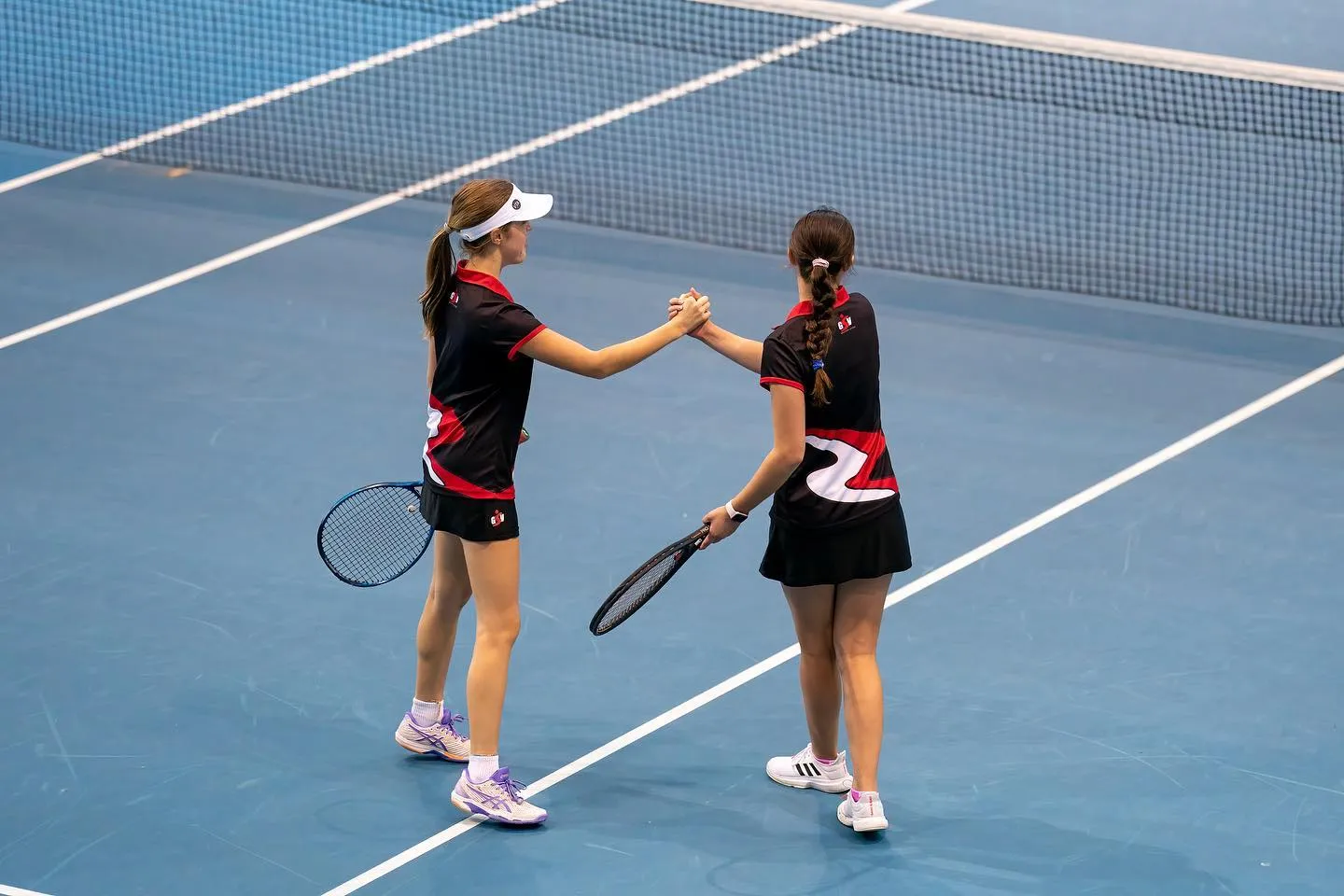

Stella and Ava, Year 9 – both students were selected in the GSV Representative Tennis Team this year.



Stella and Ava, Year 9 – both students were selected in the GSV Representative Tennis Team this year.


Stella and Ava, Year 9 – both students were selected in the GSV Representative Tennis Team this year.
Innovation in the Classroom…
Head of Health and Physical Education (HPE), Monique Sharp, shares some key initiatives running through the curriculum. “While the development of fundamental skills remains important, we have moved our pedagogy to a more constraints-based approach. This method of teaching and coaching recognises that learning occurs in a nonlinear pattern. Although the learning process may take longer, we see significant advantages to longer term skill acquisition and development in our students.”
In a constraints-led approach, practice more closely replicates the game environment and is more varied. The learning, therefore, is more implicit, engenders autonomy, facilitates the development of more applicable skills, makes better problem solvers, and provides the learner with a more interesting and engaging environment. “By arming students with transferable game-based knowledge and skills, we better equip them to engage in this form of physical activity over their lifespan.”
The Sport Education in Physical Education Program (SEPEP), delivered in Years 6 and 8, is a student-led program which empowers them to take responsibility for their own physical education, learning and understanding on how to self-organise and participate in a given sport. Students nominate to play various roles within a team, for example: the fitness coach to run the warm-up, the statistician who collects and analyses performance data, the coach who is charged with strategy and tactics, or the player. This program “takes a strength-based approach where movement is valued, and all students experience the opportunity to participate through a different role in the team.” In the words of modern-day (sport) philosopher, Ted Lasso:
"I do love a locker room. It smells like potential."
- Ted Lasso, AppleTV
Potential for creativity, innovation and inspiration can be found in all kinds of places. A mind open to change and continuous improvement defines our approach towards achieving our two big goals: Every Grammarian active, every day; and our graduates to leave school engaged in sport or physical activity on a regular basis. It’s not just that our lives depend on it. The quality of our lives – physically, mentally, emotionally, socially – depends on it.
REFERENCES:
https://www.clearinghouseforsport.gov.au/nsra
https://sls.com.au/drowning-deaths-highest-in-more-than-25-years/
Innovation in the Classroom…
Head of Health and Physical Education (HPE), Monique Sharp, shares some key initiatives running through the curriculum. “While the development of fundamental skills remains important, we have moved our pedagogy to a more constraints-based approach. This method of teaching and coaching recognises that learning occurs in a nonlinear pattern. Although the learning process may take longer, we see significant advantages to longer term skill acquisition and development in our students.”
In a constraints-led approach, practice more closely replicates the game environment and is more varied. The learning, therefore, is more implicit, engenders autonomy, facilitates the development of more applicable skills, makes better problem solvers, and provides the learner with a more interesting and engaging environment. “By arming students with transferable game-based knowledge and skills, we better equip them to engage in this form of physical activity over their lifespan.”
The Sport Education in Physical Education Program (SEPEP), delivered in Years 6 and 8, is a student-led program which empowers them to take responsibility for their own physical education, learning and understanding on how to self-organise and participate in a given sport. Students nominate to play various roles within a team, for example: the fitness coach to run the warm-up, the statistician who collects and analyses performance data, the coach who is charged with strategy and tactics, or the player. This program “takes a strength-based approach where movement is valued, and all students experience the opportunity to participate through a different role in the team.” In the words of modern-day (sport) philosopher, Ted Lasso:
"I do love a locker room. It smells like potential."
- Ted Lasso, AppleTV
Potential for creativity, innovation and inspiration can be found in all kinds of places. A mind open to change and continuous improvement defines our approach towards achieving our two big goals: Every Grammarian active, every day; and our graduates to leave school engaged in sport or physical activity on a regular basis. It’s not just that our lives depend on it. The quality of our lives – physically, mentally, emotionally, socially – depends on it.
REFERENCES:
https://www.clearinghouseforsport.gov.au/nsra
https://sls.com.au/drowning-deaths-highest-in-more-than-25-years/
Innovation in the Classroom…
Head of Health and Physical Education (HPE), Monique Sharp, shares some key initiatives running through the curriculum. “While the development of fundamental skills remains important, we have moved our pedagogy to a more constraints-based approach. This method of teaching and coaching recognises that learning occurs in a nonlinear pattern. Although the learning process may take longer, we see significant advantages to longer term skill acquisition and development in our students.”
In a constraints-led approach, practice more closely replicates the game environment and is more varied. The learning, therefore, is more implicit, engenders autonomy, facilitates the development of more applicable skills, makes better problem solvers, and provides the learner with a more interesting and engaging environment. “By arming students with transferable game-based knowledge and skills, we better equip them to engage in this form of physical activity over their lifespan.”
The Sport Education in Physical Education Program (SEPEP), delivered in Years 6 and 8, is a student-led program which empowers them to take responsibility for their own physical education, learning and understanding on how to self-organise and participate in a given sport. Students nominate to play various roles within a team, for example: the fitness coach to run the warm-up, the statistician who collects and analyses performance data, the coach who is charged with strategy and tactics, or the player. This program “takes a strength-based approach where movement is valued, and all students experience the opportunity to participate through a different role in the team.” In the words of modern-day (sport) philosopher, Ted Lasso:
"I do love a locker room. It smells like potential."
- Ted Lasso, AppleTV
Potential for creativity, innovation and inspiration can be found in all kinds of places. A mind open to change and continuous improvement defines our approach towards achieving our two big goals: Every Grammarian active, every day; and our graduates to leave school engaged in sport or physical activity on a regular basis. It’s not just that our lives depend on it. The quality of our lives – physically, mentally, emotionally, socially – depends on it.
REFERENCES:
https://www.clearinghouseforsport.gov.au/nsra
https://sls.com.au/drowning-deaths-highest-in-more-than-25-years/





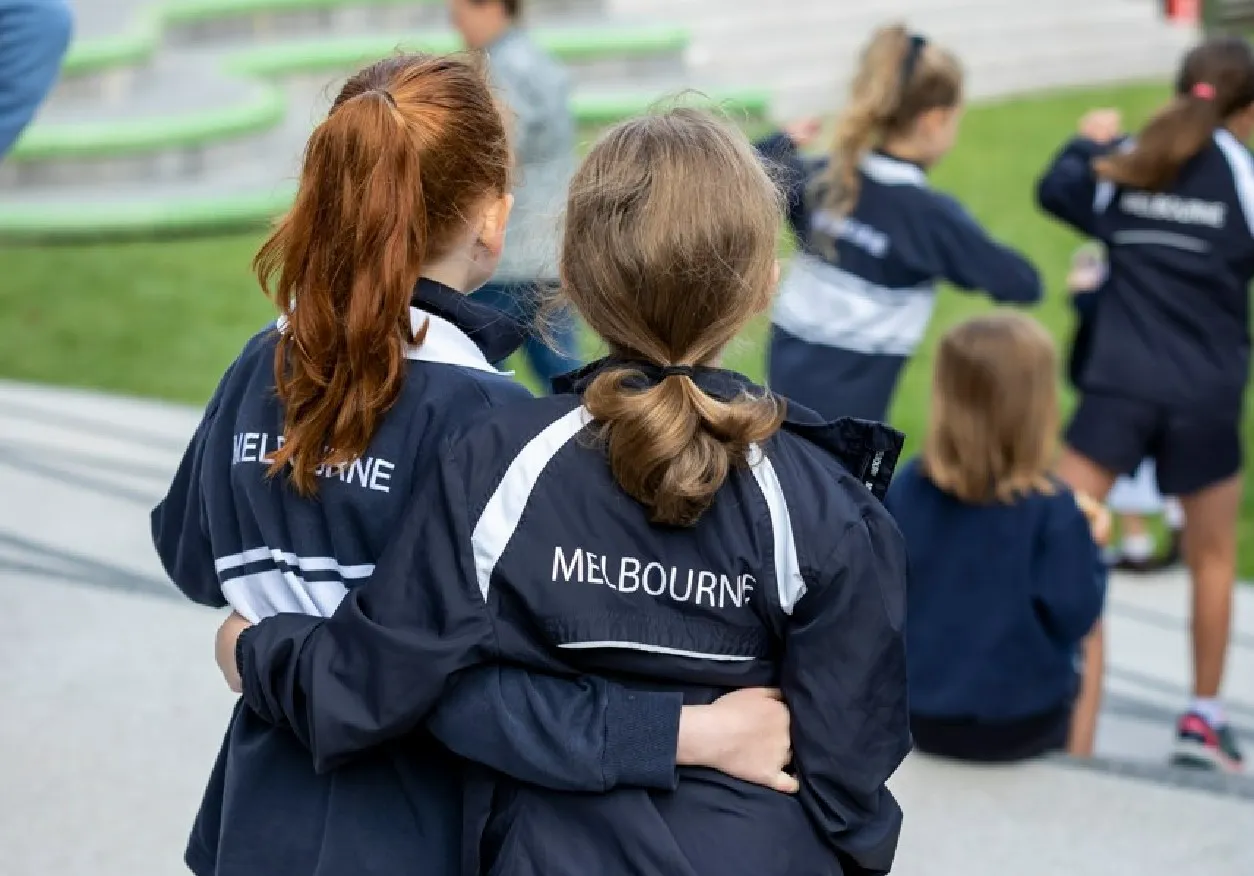

.webp)
.webp)

